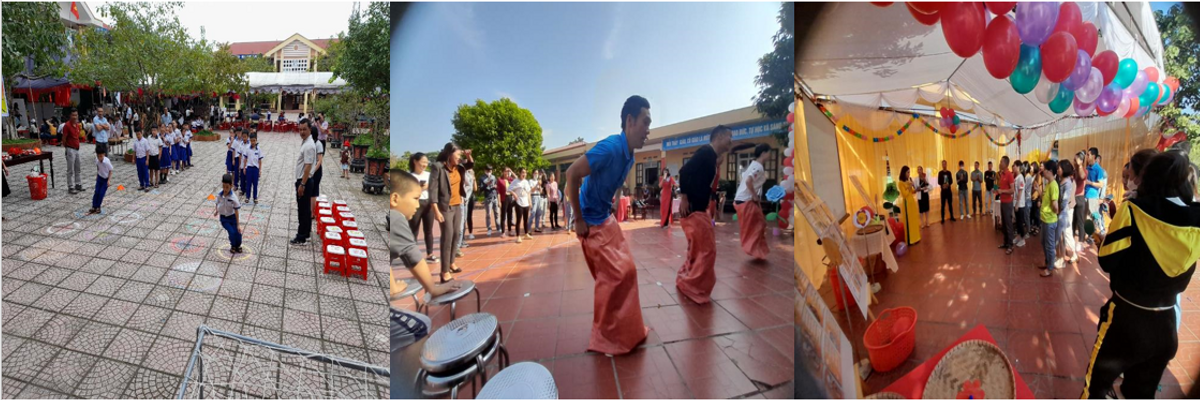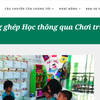In addition to activities organized for parents to learn about Learning through Play, schools can organize activities aimed at comprehensive development for students in the school yard to create a fun and exciting atmosphere. for parents and students when participating in the Learning through Play festival. In addition, the school can organize play activities with coordination between parents and children.
1. Physical development:
Includes motor control activities, the ability to coordinate body parts (legs, arms...), reflexes and awareness of one's own body's abilities and limits such as endurance, strength and endurance. resilient.
Age-appropriate physical activities:
Sack jumping, hopscotch;
Rope skipping,
Tug
Kick the ball into the goal
2. Cognitive development.
Includes activities that help children increase their ability to observe, think, evaluate and solve problems...
Activities for children to read stories, tell stories, and act out plays in many different ways
For example:
Children listen or read storybooks, then draw the story they read or use cloth puppets or other toys to retell the story with their friends.
3. Develop social skills.
Includes activities to help children enhance teamwork coordination,...
Activities that require coordination among group members:
For example:
There are 2 groups of students standing in 2 rows. Each group has 1 ball. The first member passes the ball to the second person and the second person passes it to the next person. Pass it in turn until the last person. The last person quickly ran up and put the ball into the basket. After 3 rounds, the group that puts more balls into the basket will be the winner.
4. Develop emotional skills.
Includes activities that help children express emotions and thoughts in a healthy way...
Activities help children identify, name emotions and express emotions
For example:
Draw your own faces of happy, sad, angry, surprised people... on cardboard or large pebbles;
Or children make their own cloth dolls and decorate the doll's face with emotions of happiness, sadness, anger, surprise, etc. on the doll's face.









 ""
- iPLAY Project: Integrating Learning through Play in primary education in Vietnam (VVOB Organization)
""
- iPLAY Project: Integrating Learning through Play in primary education in Vietnam (VVOB Organization)
